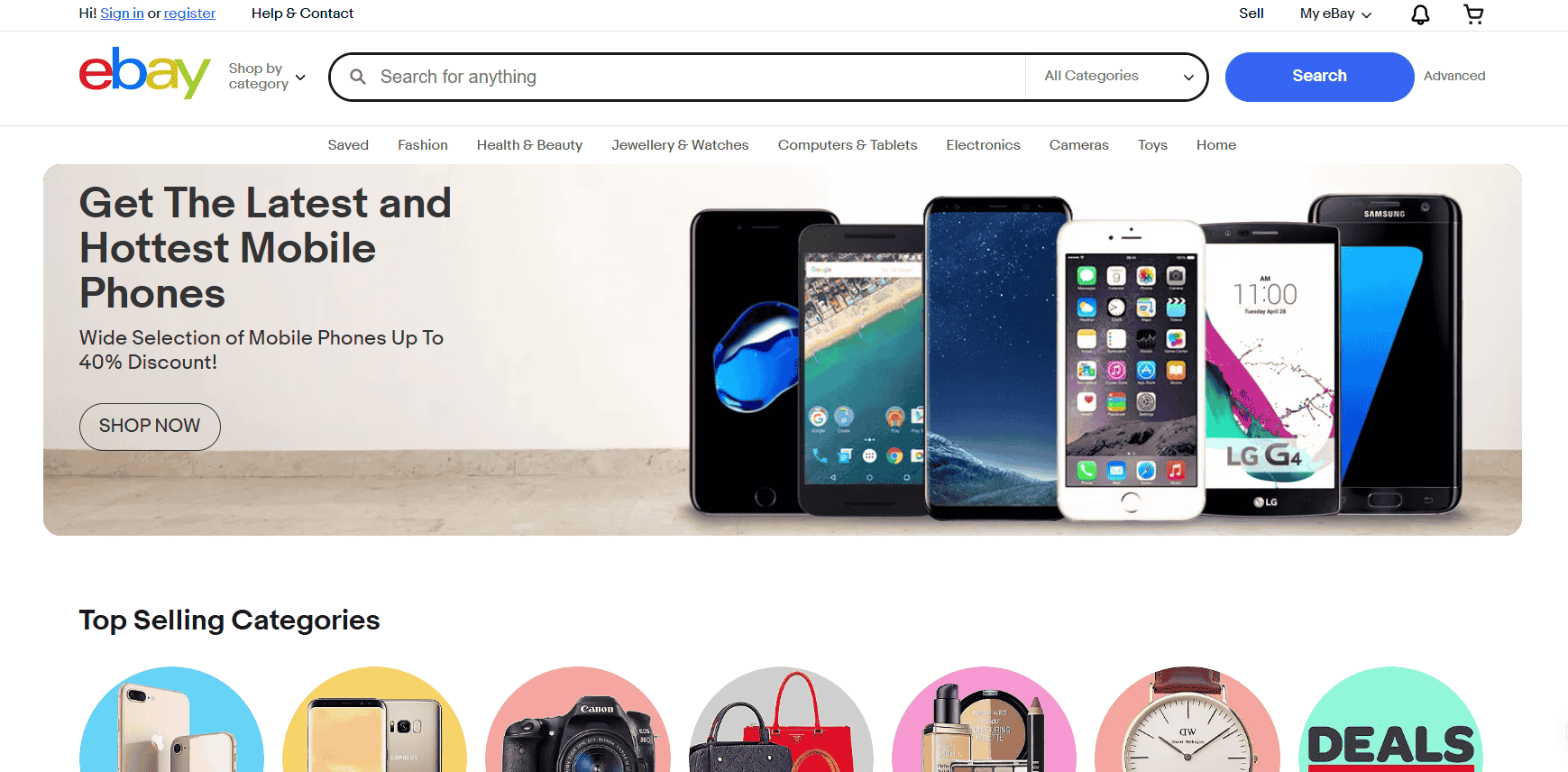Ever bought something online and felt like you got catfished? Maybe the sofa looked smaller than in the photos, the lipstick shade didn’t match your skin tone, or that “perfect-fit” jacket turned out two sizes too small. That’s where augmented reality in ecommerce steps in to save the sale and your sanity.
AR is no longer just a flashy tech buzzword tossed around in startup meetings. It’s one of the most powerful tools modern online sellers like you can use right now to reduce returns, boost customer satisfaction, and skyrocket conversions.
When I first dipped my toes into AR—mainly because one of my clients decided to change direction—I thought it was going to be a tech nightmare. But as soon as I added a virtual try-on option for the top-selling item, the conversion rate jumped noticeably.
-
Augmented Reality in ecommerce helps shoppers visualize products in their space, reducing doubt and increasing buying confidence.
-
Online stores using AR see fewer returns and more 5-star reviews because customers know what to expect before they buy.
-
You don’t need a big team or budget to add AR—tools like Shopify AR, Zakeke, and Augment make it simple and affordable.
-
Brands like IKEA, Sephora, and Nike are already using AR to boost engagement and set new expectations for the shopping experience.
-
AR in ecommerce is evolving fast with AI, live shopping, and full-body try-ons becoming the future of online retail.
Customers started spending more time on the page, asking fewer questions, and leaving reviews that said things like, “It looked exactly like it did on my phone.” That kind of feedback is pure gold.
So let’s unpack how this technology actually works, why it’s revolutionizing online retail, and most importantly, how you can start using it, even if you’re running a small shop on a shoestring budget.
Spoiler alert: You don’t need a massive team or a six-figure investment to get started with augmented reality in ecommerce. You just need the right tools, the right mindset, and a bit of a head start.
What Is Augmented Reality in ecommerce?
At its core, augmented reality (AR) blends digital elements into the real world. It’s not full-on virtual reality, where you disappear into some sci-fi simulation.
AR keeps you grounded—right in your living room, office, or bedroom—but overlays digital magic right on top of it. Think of it like adding a virtual layer to your everyday life using just your smartphone, tablet, or a pair of AR glasses.
In the context of online shopping, AR is a real, practical solution to a very real problem: your customers can’t physically touch or try your products. That’s where AR steps in and bridges the gap. It lets your customers:
- “Try on” clothes, glasses, makeup, or jewelry using virtual try-on tools that map accurately to their face or body—no imagination required.
- Place a 3D model of furniture or appliances into their room with product visualization, helping them check for sizing, aesthetics, and whether it clashes with their favorite rug.
- Interact with 3D product previews right on your site—spin it, zoom it, see it from every angle—so they feel like they’re holding it, even if it’s just through a screen.
And no, this isn’t just some Silicon Valley experiment. The AR shopping experience is already being used by massive brands like IKEA, Sephora, and Amazon—and guess what? Even small and mid-sized businesses are jumping on board because the tools are becoming more accessible every year.
I still remember the first time I used a virtual product try-on while shopping for sunglasses. It was the difference between “meh, maybe later” and “add to cart now.” That instant confidence is exactly what AR brings to your customers.
SEO Tip: Phrases like “AR shopping experience,” “virtual product try-on,” and “3D ecommerce tools” are highly searched right now—and inserting them naturally, like we just did here, is one of the best ways to help blog posts like this rank on Google.
Why Augmented Reality Gives Online Sellers a Real Advantage
One of the biggest struggles with ecommerce is that your customers can’t touch, feel, or try your products. You can write the most detailed description or take the best photos, but it still doesn’t beat holding the product in your hands.
Augmented reality bridges that gap and brings the in-store experience straight to your customer’s screen.
Research suggests that 80% of shoppers using augmented reality feel more confident in their purchases, with 66% of AR users being less likely to return their purchases. This means shoppers are actively looking for this feature.
Even more eye-opening: Shopify AR merchants have seen up to 94% higher conversion rates on product pages with 3D models. That’s nearly doubling your chance of making a sale just by helping people see what they’re buying in their own space.
So, what does all this actually mean for you?
First, you’ll deal with fewer unhappy customers. When people know exactly what they’re getting—how it looks, how it fits, how it works in their home—they’re far less likely to return it. That alone can drastically reduce operational headaches.
Second, augmented reality in ecommerce helps shoppers feel more confident about their buying decisions, especially with higher-priced or personalized items. The ability to “try before they buy,” even virtually, removes a huge layer of doubt.
Then there’s the engagement factor. People spend more time interacting with AR tools—rotating products, zooming in, testing variations—which naturally increases the odds of a sale. It also gives you a leg up in branding.
Offering AR makes your store look modern, trustworthy, and professional, especially when compared to competitors still relying on static images and long descriptions.
From my own experience, when I started experimenting with AR for high-return products, specifically things like home decor and wall art, I wasn’t sure what to expect. But what happened next surprised me. Refund requests dropped. I started seeing more 5-star reviews.
One shopper even said, “It was weirdly fun to shop on your site.” Another thanked me for the “surprisingly smooth experience,” which, let’s be honest, isn’t something you hear often in ecommerce. AR created a deeper level of trust and satisfaction with my customers.

That’s the real advantage of AR in ecommerce. It solves real buying problems in a way that makes both you and your customers feel like the transaction was a win.
Brands Using AR in ecommerce (and Winning)
You don’t have to reinvent the wheel or spend months coding your own app to leverage AR retail solutions. Some of the world’s biggest brands are already using augmented reality in ecommerce to skyrocket sales, reduce returns, and deeply engage their customers. And the best part? Their results are paving the way for smaller sellers like you to follow suit.
When I first tried IKEA’s AR app, I spent nearly 20 minutes moving a digital armchair around my living room like it was a video game. It felt intuitive, helpful, and even fun, and I didn’t hesitate to buy after seeing it fit perfectly in my space. That’s the magic AR brings to online shopping: it removes the hesitation and adds confidence.
Take a look at how these big players are doing it right:
Brand AR ecommerce Feature Impact on Customer Experience
IKEA Place Lets shoppers drop true-to-scale furniture into their rooms using their phone’s camera. Real-time product visualization reduces “will it fit?” anxiety and boosts purchase confidence.
Sephora Virtual Artist Allows customers to test makeup shades on their faces virtually. Eliminates the trial-and-error in online beauty shopping, leading to more confident purchases.
Nike Fit Uses AR to scan a shopper’s foot and recommend precise shoe sizing. Goes beyond foot length—considers shape, width, and volume. Greatly reduces return rates.
L’Oréal Style My Hair Offers AR hair color try-ons using your live camera feed. Customers experiment with bold new shades before committing, resulting in higher product trust.
Amazon AR View Enables placement of thousands of products (like TVs, decor, and appliances) into your home. Customers can “see” the item in their environment, making decisions faster and more confidently.
Each of these tools enhanced the AR shopping experience and became a key part of the buyer journey. These brands are offering immersive, interactive shopping experiences that leave traditional static images in the dust.
Thanks to platforms like Shopify and tools like Zakeke or Augment, you can now offer similar AR-powered features in your own store, without a Fortune 500 budget.
Want to know which products in your store are ripe for an AR upgrade? Start with the ones your customers hesitate on or return the most. That’s what I did, and the results were both noticeable and measurable. Fewer returns. More time spent on product pages. And yes, more “thank you” emails.
How to Add Augmented Reality to Your Online Store
You don’t need a massive budget or a team of developers to bring augmented reality to your online store. Seriously. The key is to start with the right platform, one that already supports AR functionality or makes it easy to integrate:
Platform AR Capability Best For
Shopify AR Built-in tools to upload 3D models, enable AR product previews, and customize product experiences Sellers using Shopify who want plug-and-play AR
BigCommerce Supports AR plugins and 3D integrations via third-party tools Stores needing flexible integrations
Wix Offers AR compatibility through partner apps and custom integrations Beginners or creatives building with Wix
Now, once your platform’s ready, you’ll need to actually create those virtual experiences. That’s where these AR tools and services come in handy:
- Zakeke: Perfect for creating interactive 3D product previews and virtual try-ons for apparel, glasses, or accessories. Bonus—it integrates directly with Shopify, WooCommerce, and more.
- Augment: A robust AR platform for product visualization. Great if you’re selling home decor, appliances, or anything that customers need to “see” in their space.
- Vection Technologies: Offers immersive AR experiences for both B2C and B2B sellers, which is ideal if you sell industrial or customized products.
Now, if you’re working with a tight budget, don’t overthink it. Just start small. Focus on your top 1–3 best-selling or most-returned products, and turn those into AR-ready experiences. Why those? Because that’s where you’ll see the biggest ROI.
You can create 3D models using free tools like Blender, or if 3D design isn’t your thing, you can hire a freelance artist on Fiverr or Upwork. I’ve personally hired freelancers to model handmade items like bags and wall art, and it cost me under $100 per product. Totally worth it for the boost in shopper confidence and the noticeable dip in refund requests.
And here’s a crucial tip: test your AR experience on mobile. Most AR shoppers are browsing on their phones, not laptops.
I once had a customer tell me the 3D model on desktop looked fine, but on mobile, it lagged so badly she gave up. That was my wake-up call. Always test it yourself on multiple devices before going live.
Challenges and Limitations to Consider
Now, augmented reality in ecommerce isn’t all sunshine and instant conversions. As exciting as it is, there are a few bumps on the road you should expect, especially when you’re first getting started.
One of the first challenges you’ll run into is the cost of development. Creating high-quality 3D models or integrating AR tools into your online store can range anywhere from $100 to over $1,000 per product.
That might sound steep, and honestly, when I first tested AR with one of my top products, I had sticker shock too. But once I saw how long customers were staying on the page—and how often they were hitting “Buy Now”—the investment started making sense.
Then there’s the issue of tech compatibility. Not everyone has a phone that supports AR, and even when they do, some shoppers just aren’t familiar with how to use it.
You might have the slickest virtual try-on tool out there, but if your customer doesn’t know how to activate their camera or navigate the feature, it might as well not exist.
Another thing to watch out for is page speed. If your 3D product previews are too heavy or not optimized, they can slow down your website, and nothing kills a sale like a page that takes forever to load.
I had to work closely with a developer to find the right balance between beautiful visuals and fast performance, and it made a huge difference in both engagement and bounce rates.
And let’s not forget the user adoption hurdle. Even when everything works perfectly, many shoppers skip right over AR features simply because they don’t know what they’re looking at or how to use it.
I learned pretty quickly that you can’t just add AR and expect magic. You have to guide people through the experience. A simple walkthrough, tooltip, or short demo video can go a long way in getting them to try it.
But all these challenges are temporary. As AR shopping becomes more common, and with tech giants like Apple, Meta, and Google pushing their own AR platforms, customer expectations are evolving fast.
What feels optional today could become the norm tomorrow. That’s why I truly believe it’s smarter to get in now, while your competitors are still figuring it out, rather than scrambling to catch up later. Even starting with just one product or one category puts you ahead of the game.
What’s Next for AR in Online Shopping?
Augmented reality in ecommerce is only getting started, and that’s the exciting part. What once felt like sci-fi is now shaping the future of how we buy everything from sneakers to sofas. Over the next few years, AR won’t just be an optional add-on. It’ll be something customers expect.
One of the biggest shifts we’ll see is the rise of AI-powered AR. This means virtual try-on tools will become way smarter. Instead of just letting shoppers “see” a product, they’ll actually personalize the experience based on a person’s size, body shape, skin tone, and even style preferences.

Imagine having your own digital stylist who knows exactly what fits you best before you even add something to your cart.
Another big leap will happen in live shopping. Influencers and sellers won’t just hold up a product. They’ll be able to use AR overlays in real-time.
You’ll watch a livestream and instantly see what a product would look like on you, in your space, or in a different color, all without ever leaving the stream. It’s like QVC meets Snapchat filters, but way more powerful for driving sales.
Then there’s the full-body try-on experience. Thanks to devices like the Apple Vision Pro and Meta Quest 3, shoppers will be able to see how clothes or accessories look on them from head to toe in immersive, 3D environments.
We’re not just talking about “trying on” shoes—you’ll be stepping into virtual showrooms and seeing outfits in motion, in your space, with your body.
And the data backs all this up. Gartner predicted that 100 million consumers would shop using AR both online and in-store by 2020, and the reality came pretty close. That’s not just a trend. That’s a massive shift in consumer behavior.
Even platforms like TikTok and Instagram are jumping in by testing AR product tags, so users can interact with and visualize items right inside their feeds.
I’ll be honest—when I first started testing AR on just one product line, I wasn’t sure what to expect. But the results were eye-opening.
Shoppers spent more time on the page, they asked fewer questions, and many actually said the process was fun. Fun! When was the last time someone said that about online shopping?
If you’re still on the fence about AR, just know that your competitors are probably already exploring it. The good news? It’s not too late. But it is the right time to get ahead before AR shopping becomes the new normal.







